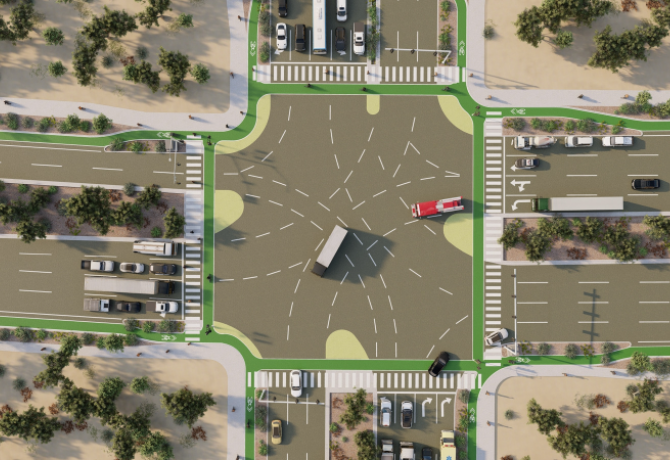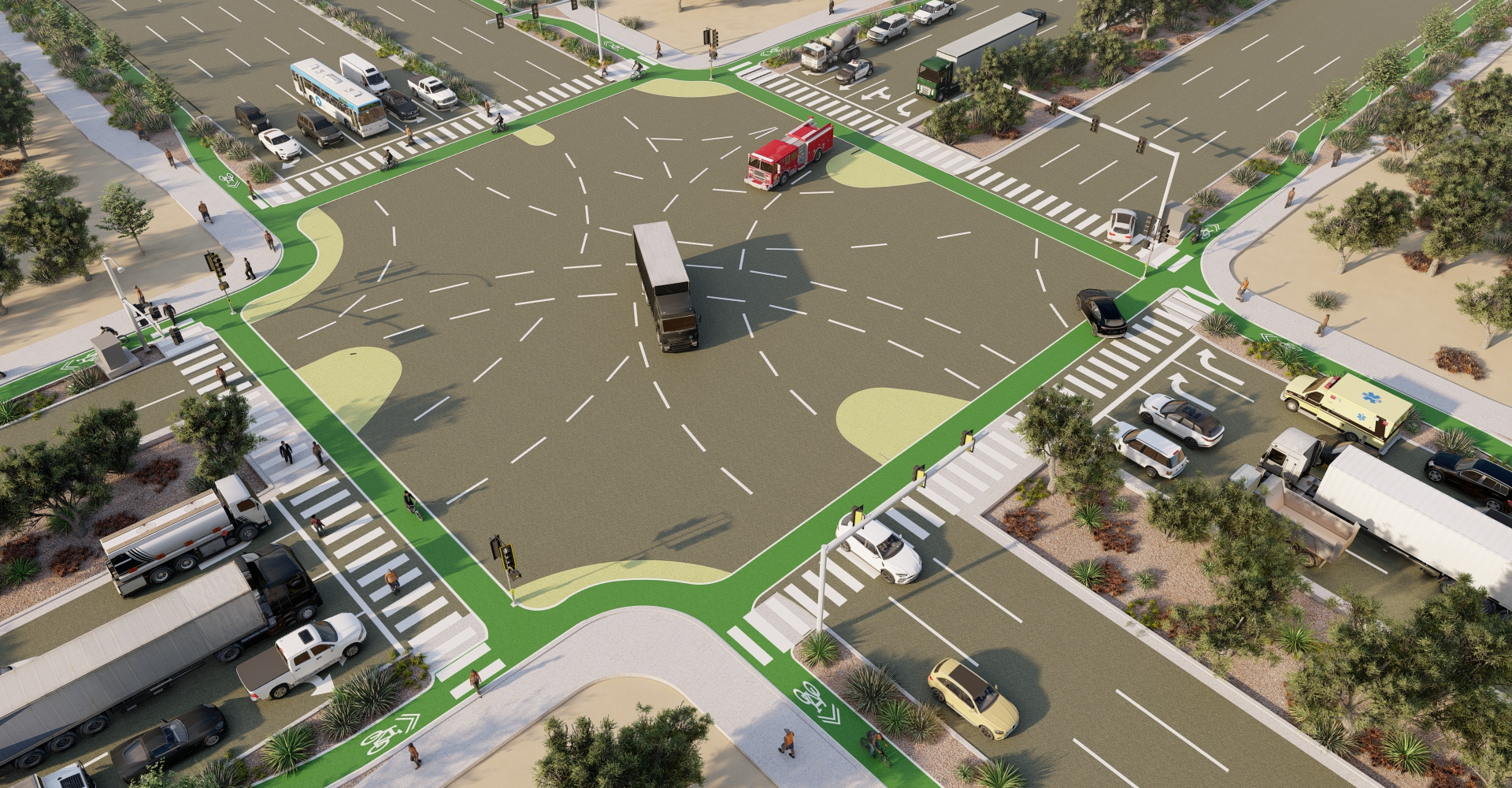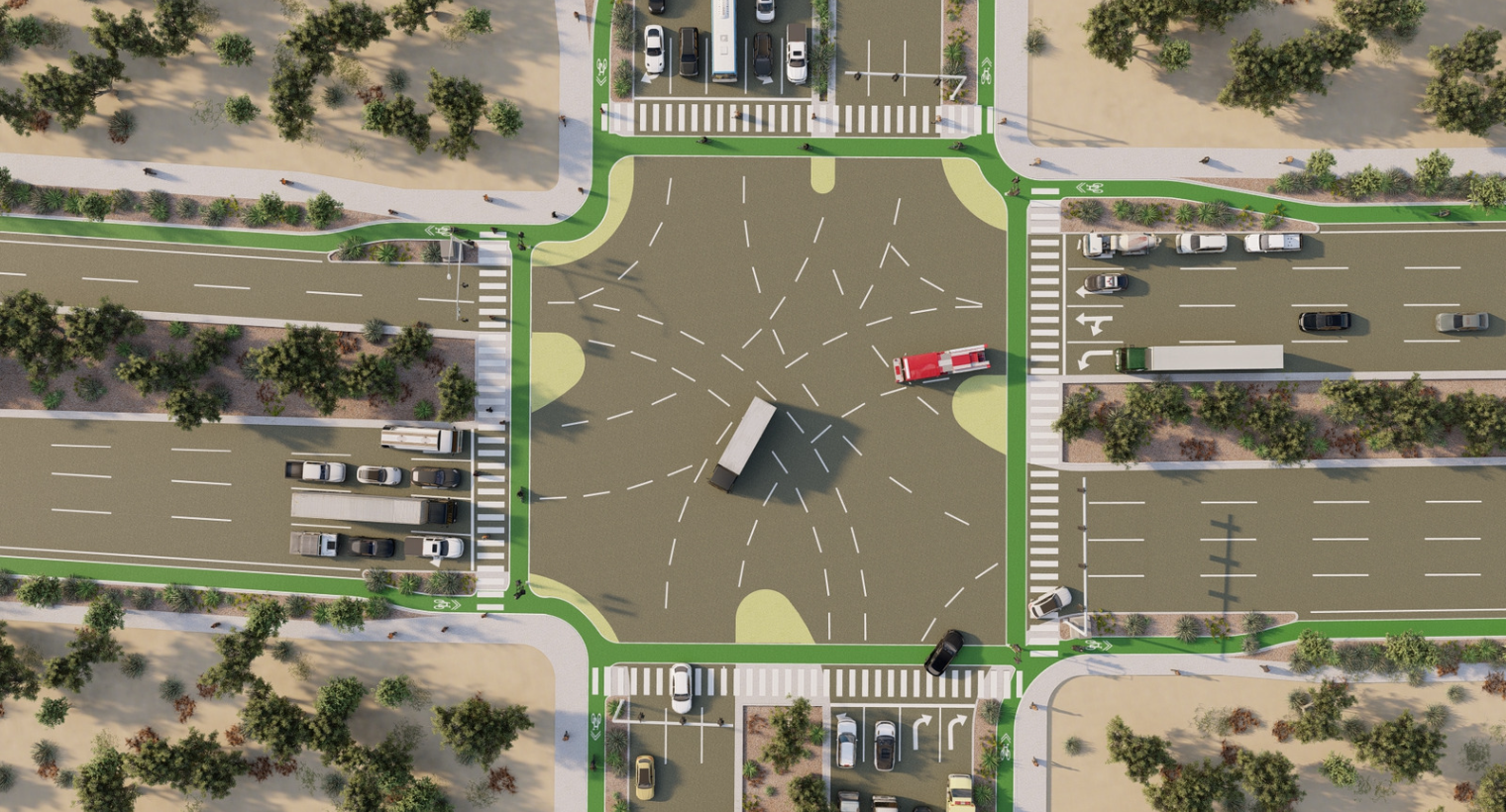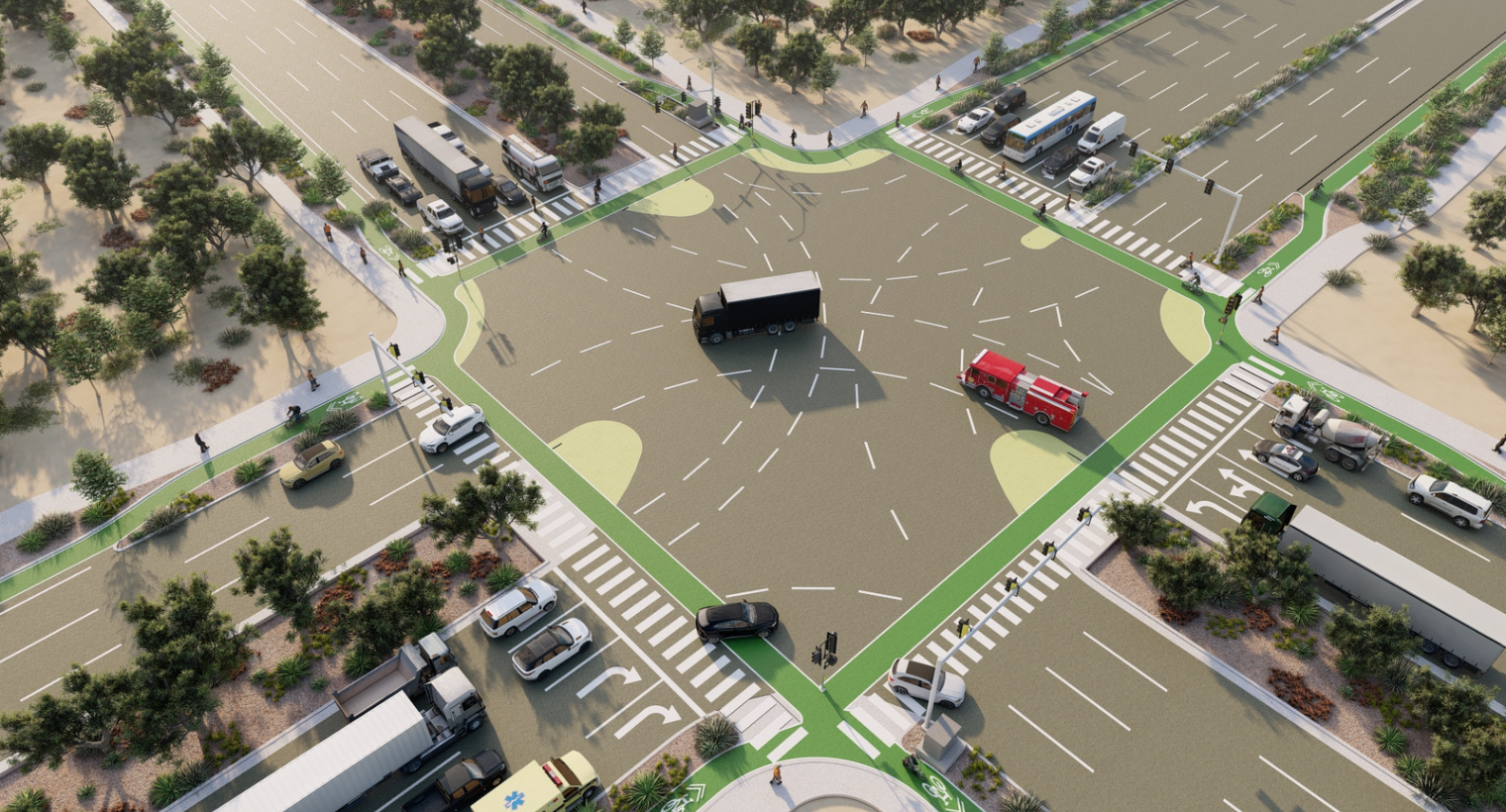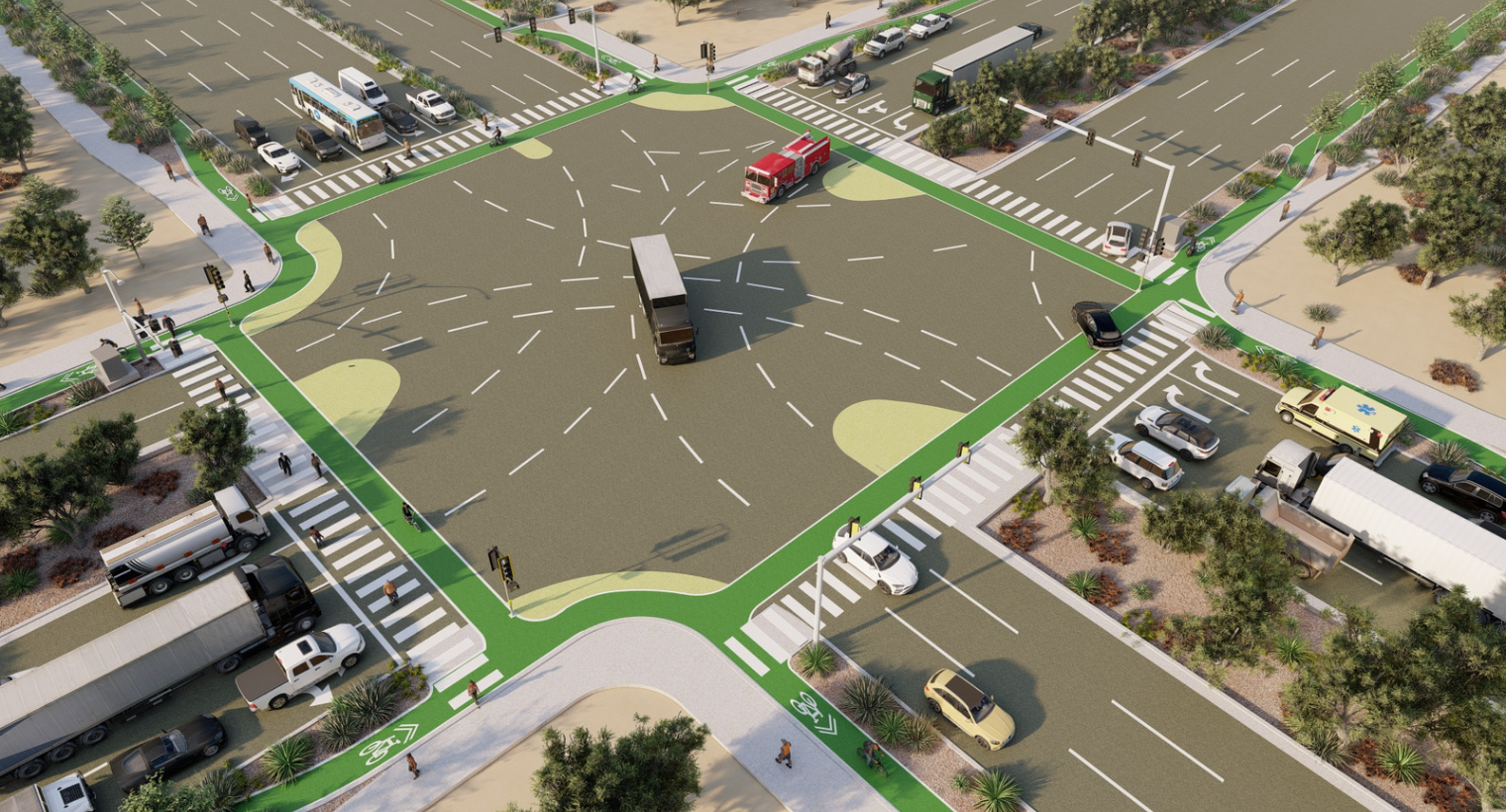Intersection
Arterial corridors intersections often present multiple thru, left turn and right turn dedicated lanes on each direction due to traffic needs. This results in greater crossing distance for pedestrians and bicyclist than in local streets. In addition, dedicated right turn lanes typically crosses the bike lane, creating a conflict point between a car and a bike and therefore a dangerous situation.
- Value $1,340,000.00
- Client Bernalillo County
- Architect Bohannan Huston
- Location Albuquerque, NM, United States
- Completion Date 1st quarter 2025
- Square Footage 18-km
Concept
This alternative design deviates the bike lane to the back of curb, includes a raised median between the thru/right-turn driving lanes and the bike lane, and locate the pedestrian crossing adjacent to the bike lane. This layout reduces the conflict points in the intersection between drives, bicyclists and pedestrian and provide safer areas for pedestrian and bicyclists. Median openings and pavement stripping increase drivers awareness of moving elements, thus reducing the risk of accidents.
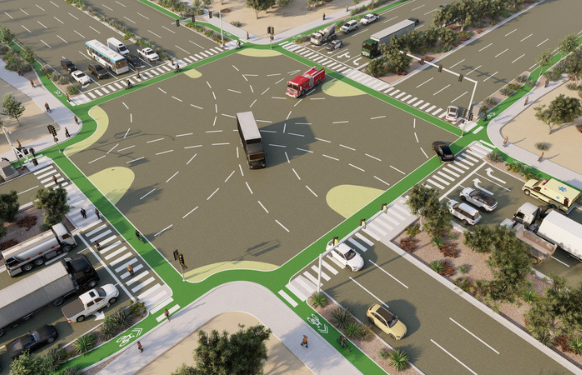
Challenges
At the intersection, traffic flow requires dedicated left and right turn lanes, creating wider pavement width, and thus longer pedestrian and bike travel time to cross to the other side. As a consequence, pedestrian and bike riders sense the crossing is not as safe as a local street, and the intersection becomes a physical for these users.
Solutions
We designed an alternative where the bike lanes are protected by a concrete median at the intersection, allowing for free movements at the same time as the vehicular traffic. These medians reduce the pavement width by almost a full lane, and add elements in the pavement that makes drivers and pedestrians more aware of, reducing accidents and increasing the safety and usage of the intersection.
